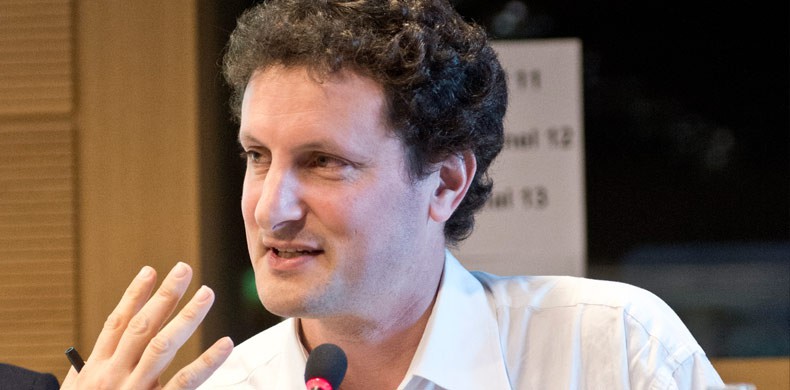This summer marked an important milestone in microfinance. David Roodman announced his move from the Center for Global Development to the Gates Foundation. In the process, David also stepped down from his role as the blogger of record for the sector. As we launch the new e-MFP blog, we look back and celebrate the most influential blog in microfinance.
My own journey into microfinance began at just about the time that David started his experiment of writing a book in the form of a blog, what he called the Open Book Blog. I have learned much from it, and I daresay few in microfinance can claim not to have been influenced by it. Even if you were not a reader, you likely have been exposed to ideas that were first broadly aired in David’s blog.
Consider what microfinance looked like back in 2009, when David started his Open Book Blog. For one, questioning the impact of microfinance on clients’ well-being, a key topic of his blog, was the domain of a handful of academics. For the vast majority of industry participants, and certainly nearly all those outside it, the ability of microcredit to help reduce poverty was an unquestioned assumption. It also had many corollaries – high repayment rates were a prima facie demonstration of the beneficial value of credit to the poor; competition among MFIs helped reduce interest rates and improve efficiency; connecting capital markets with microfinance was a goal worthy of being pursued as a core institutional mission; and finally, that credit was the obvious missing financial service that the world’s poor were missing in the first place.
In the four years since, these ideas have changed profoundly. Microfinance – and certainly microcredit – is nowadays only rarely viewed as an unalloyed benefit. High repayment rates can still be explained through customer satisfaction, but also through aggressive collection practices, client desperation, and even overheated markets where clients can borrow from one MFI to repay another. The role of competition is now viewed more often in the context of market saturation rather than its downward influence on interest rates. And as for the role of capital markets in the sector, one of the most visible of such efforts has been disappointing, while another ended in disgrace. Meanwhile, credit is now viewed as a part of broader financial services to the poor, and often of secondary importance to savings.
So what does all this have to do with David Roodman and his blog? Certainly, not all of these ideas were his own – he was an aggregator and transmitter as much as an idea generator. It wasn’t David, but Esther Duflo, Abhijit Banerjee, and a host of other researchers and their RCT studies that killed off the notion that microcredit is an inherent good. But it was David’s blogs on the subject that spoke to the world, translating academic lingo for those with no patience for econometric formulas. And David himself also had a major hand in this, using his joint study with Jonathan Morduch to publicly dismantle a key study that purported to show positive impact of Grameen loans on their borrowers.
Likewise with other issues. The blog helped undermine the use of high repayment rates as a sign of borrower satisfaction. On competition, the blog served as the primary source of reporting on the goings-on in Andhra Pradesh, though drawing extensively on the work of Ramesh Arunachalam, N. Srinivasan, and many others. On capital markets, David was among the earliest analysts to suggest that the flow of foreign capital to microfinance had major downsides, though there too his case was strengthened by the work of Hugh Sinclair. And on savings, David went back centuries, dusting off the writings of forgotten heroes of financial services for the poor, such as Priscilla Wakefield, to remind us that it was through savings, not credit, that the working poor of the Industrial Revolution came to participate in the financial sector. But there again, David was retracing the footsteps of Hans Dieter Seibel, who had been arguing much the same thing at least a decade earlier.
So what, in the end, was David’s contribution? I believe it was his rare gift to weave a multi-threaded story into a clear narrative, to make inscrutable econometrics understandable even to the statistically-challenged, and to distill complex arguments down to their most relevant parts. David once cited a quote that the world needs both playwrights and critics, even if more of the former and less of the latter. David was the rare critic who could stand shoulder-to-shoulder with the best playwrights of the microfinance world and help them (and the rest of us) see the true state of things.
Finally, there is the question of the Open Book Blog. It has been silent for some months now, even before David’s official departure from CGD. This is a great loss to the microfinance community. Many have praised David’s seminal book, Due Diligence, but I believe that the blog that incubated the book was a far more important contribution. Since David signed off, the level of exploration, interaction, and engagement he provided to the sector has yet to be replaced. Many other blogs have emerged as important vehicles for transmitting and sharing ideas, with the CGAP blog arguably leading the pack. But they are almost exclusively institutional blogs – important and useful, but without the independent, single voice that made the Open Book Blog such a fantastic vehicle that made learning fun.
For four years, David’s blog was the first thing I read each morning. I miss those days. Good luck David in your new job, but do come back for a virtual visit and blog post once in a while!



Leave a comment